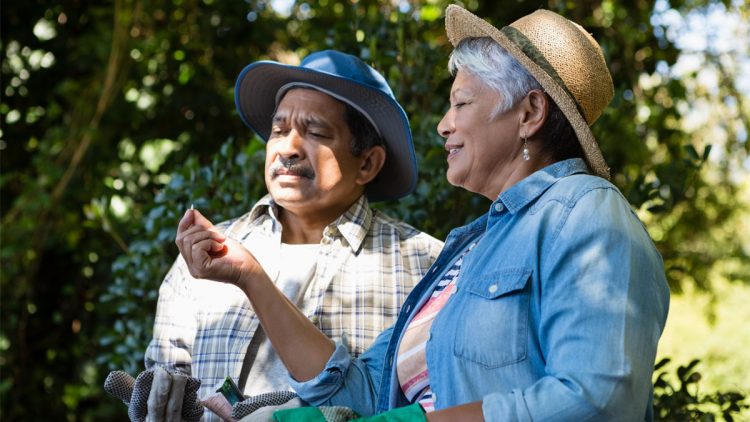Types Of Exercise for People with Dementia
Exercise can help those suffering from Dementia.
Community or sports complexes typically provide an assortment of organized exercise and physical activity courses, like ball games seated exercises, music and dance, indoor bowling, or indoor/ outdoor swimming. Those with dementia might be able to use an individualized budget, paid for by the state or county. Many examples below can be modified and carried out at home. Fast walking, doing some gardening, and housework are also good types of everyday physical activities.
Individuals in the early emergence of dementia might experience no new difficulties in sporting and other physical activities they appreciate. They should be motivated to continue these activities when they can.
What is the suitable amount of exercise in the beginning to middle emergence of dementia?
There is no defined answer to that question and the suitable amount of exercise is going to differ person to person. The Department of Health & Human Services suggests 150 minutes of somewhat strenuous physical activity each week. This is equivalent to 30 minutes of activity every day, at a minimum of 4-5 days a week. This can be split up into smaller periods in the course of the day, with each period lasting about 10 minutes. As an example, it might be a swift fifteen-minute walk to the local supermarket, and then gardening duties or housekeeping later in the afternoon.
Some exercises for those suffering fromdementia
Below are some instances of the kinds of exercises that a person may carry out. This is in no way a list of all exercises – any sort of exercise is advantageous.
Gardening
Gardening is a physical activity that gives those with dementia the chance to go outdoors and is liked by a lot of people. The degree of activity can be diverse to fit someone’s abilities. It might be something that requires less elbow grease such as clipping or weeding, or a more laborious activity such as raking or mowing the lawn. These activities can help firm up the body’s muscles and strengthen breathing. Gardening can be a pleasing activity for people at every phase of dementia.
Indoor bowling
Many individuals can keep their bowling talents up to par or can take part in other ball games and might appreciate indoor carpet bowling. Many local recreation complexes provide indoor bowling areas, or sets can be acquired at toy stores or sports outlets.
Dance
Dancing can vary from regular dancing and couples or group meetings to more improvised gracefulness including ribbons, balloons, or balls. Dancing can also be performed in seated positions. This is a very socialized activity and an enjoyable way to participate in exercising. Dancing can increase strength and flexibility, assist suffering from dementia with staying well-balanced and nimble, and lowers stress.
Seated exercises
Those suffering from dementia can benefit from a regular program of seated exercises at their home or with a class at a local course. It is usually wise to see these exercises shown at least once by an instructor or through a video. These exercises are designed to build and foster muscle strength and balance and are less demanding than exercises in standing positions. They can be part of a growing routine, with the number of repetitions of each exercise increasing over time. Some instances of seated exercises can include:
- raising the heels and toes
- raising the arms upwards to the ceiling
- raising opposite arms and legs
- leg bending
- practicing moving from sitting to standing.
- making circles with the arms
- leg bicycling
- turning the upper body to and fro
- marching
- clapping under the legs
Swimming
Swimming, with supervision, is an ideal activity for those suffering with dementia. A lot of people find the feeling of being in the water calming and relaxing. Many reports have shown that swimming can improve balance and decrease the risk of falls in the elderly.
Walking
Walking is for just about anything. It doesn’t cost anything, does not require special devices, and can be carried out anyplace. The time and distance walking can be varied to suit various fitness degrees. Some local recreational centers and other organizations plan group walks, with walk leader assisting, by differing lengths, so it can also be an excellent social activity.
Assisted Living At Vista Winds Located In Peoria, Arizona
If you are doing research about retirement communities in Peoria, Arizona, Vista Winds Retirement Home should definitely be on your list. Vista Winds offers retirement living at its finest. We have a rich calendar of activities, meals prepared by a Chef and caregivers on staff 24 hours a day for your health and safety. We offer award winning independent living, assisted living and memory care services. Come tour our community to see how we are a step above the rest and how easy it is to Make Yourself at Home! Vista Winds is surrounded by amazing views and our resort style property will be sure to impress!
More Articles About Retirement
- How To Find A Retirement Community In Peoria, Arizona
- Easy Crafts For Seniors With Dementia
- Top 8 Low Stress Jobs After Retirement
- Can I Retire At 60 With 500K
- 55 Funny And Inspirational Quotes About Aging
- Retiring In Arizona Pros And Cons
- Cost Of Independent Living 2021
- Cost Of Assisted Living In Arizona
- Independent Living Vs Assisted Living

